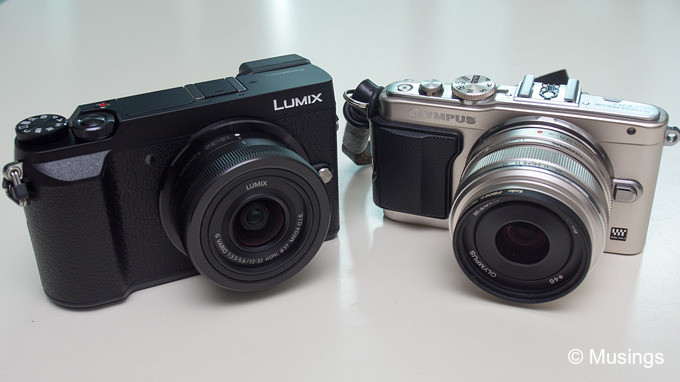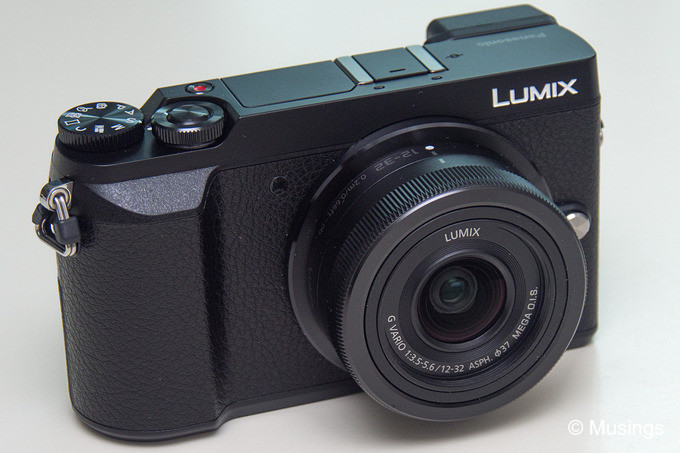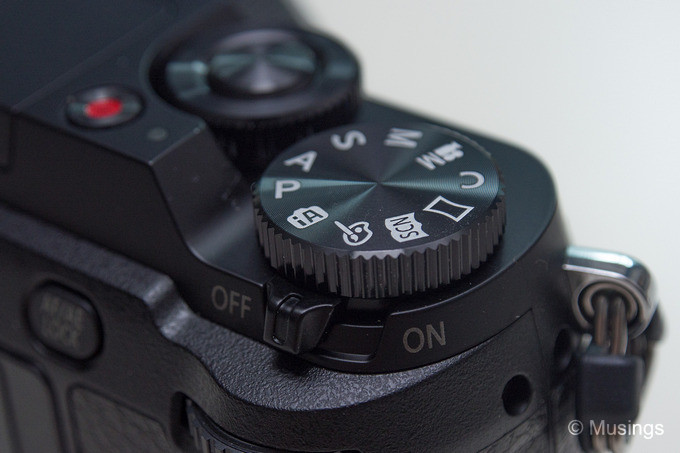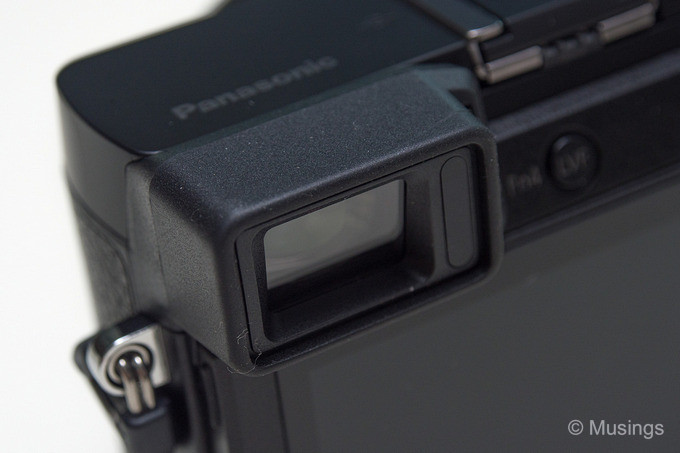Part 1 of my comments of the Panasonic GX85 here. The GX85 has some similarities to the E-PL8, but since I don’t have one such unit, a comparison against the 3.5 year old E-PL6 will have to suffice. So, about the GX85. This is a long post, so it’ll have to be split into a couple of parts.
Quite a bit heavier, deeper and larger than the E-PL6. The overall size will matter, since the camera is barely pocketable and only in a large jacket pocket. It’s also offered in three colors: black with a silver top, brown, and fully black. The brown unit would have looked lovely with the 17mm f1.8, but every other m4/3 lens I’ve got is black. So, it was the black unit. It feels dense and well-built, and the weight seems nicely distributed around its entirety.



A minimalist look when viewed from the front, and its top-panel is relatively free of dials, buttons and knobs. This is a personal preference of course, but I like dials, buttons and knobs! If there’s any one thing that almost made me buy the Pen-F instead, it would be that. There’s also a leather-type grip on the camera’s right, but it’s not sufficiently deep for you to get a good handhold if you’re mounting large lenses. A wrist strap of some type is necessary (might do a post on that at some point too).
Very fast start-up and AF. The GX85 is good to go as soon as you flick the power-on lever (though if you’ve got the 12-32mm pancake lens mounted, you might need to extended out from collapsed mode first too). AF and confident. There’s also a nifty feature to adjust to varying levels the size of the focusing box. A similar feature is also found on the Olympus cameras, but it isn’t nearly as graduated as it’s here on the Panasonic.
One of the most annoying things I felt on the E-PL6 was its plasticky and finnicky mode dial. It was too easily turned, and very often, I’d find myself in M(anual) or S(hutter priority) mode when fishing the camera out of the bag. The GX85’s mode dial doesn’t feel metallic either, and it’s somewhat stiffer than the E-PL6. That it’s slightly recessed from the edge of the camera helps, but unlike the E-M1, the absence of a mode lock button means that it’s still possible for accidental changes of recording mode.

Most people won’t bother about shutter sounds as long as it’s not too loud. Odd as this might sound, I like the GX85’s shutter release sound! It’s reasonably soft, and offers a reassuring double ‘thud’ when triggering a release. If I had to rate my most recent cameras in minutiae like this from love to hate it, it’d be the GX85, X70, E-M1, E-M5, and the relatively loud and annoying ka-plak coming out of the E-PL6. And for fully silent shooting in quiet and stealthy environments (e.g. churches, weddings), the GX85 has an electronic shutter.
Fixed-position electronic view finder. Unlike the E-Ms’, the viewfinder doesn’t use a separate eye-cup – which is well and good. The E-M5’s eye-cup is especially fiddly and comes loose easily. Two such have already been damaged from wear and tear, necessitating a costly replacement each time. As for the view inside the EVF itself, responses have been decidedly mixed. Many Internet gadget reviewers have remarked that the quality of the 2.76M dot effective field-sequential-typed EVF might had been alright some years back, but against today’s modern cameras, its quality is a step-down. Its most serious issues include possibly visible color tearing. And also that the eye needs to be perfectly lined up against it, otherwise you might see ghosting in selected elements, especially aperture and shutter speed text information. I’d put the EVF on the GX85 below that of the almost 5 year old E-M5 now. Oh – It’s still usable, just not anywhere near what you’d get with older cameras coming off Olympus.
The GX85’s touch-screen monitor isn’t fully articulating, which will make wefies with the kids tough, unless I go with a wide-angle lens and get lucky blindly composing a wefie that doesn’t ungraciously snip off one of our foreheads in the frame! The monitor is flushed with the camera’s back – nice! – and its hinge also feels extremely sturdy – distinctly more so than the E-PL6 – and decent size. The touch-screen itself is useful in configuring the camera and choosing spot AF.
On the other hand and unlike Olympus, the screen seems to have low nose-rejection (!) if Touch-AF has been enabled. I’ve had my focusing AF accidentally changed a couple of times now when my nose contacts the screen! Its got so bad that I’ve since configured one of the FN buttons to quickly disable the touch-screen, and turn it on only when I need to choose an AF spot.

More handling notes in the next post!
Recent comments